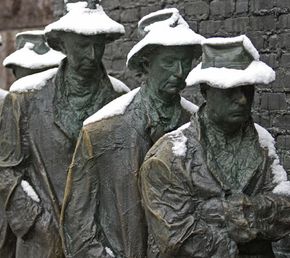If you bank in the United States, you've probably seen a sticker posted on the door of your bank that says "FDIC." Maybe you've taken the time to expand the acronym: Federal Deposit Insurance Corporation. Maybe you've read the sticker's little assurance: "Each depositor insured to at least $250,000."
But what is the FDIC? Why was it created? What does FDIC insurance cover? To understand, it helps to understand the basic premises of insurance.
Advertisement
When you buy an insurance policy, whether it's auto, life or medical insurance, the insurance company assesses the risk of insuring you by asking questions like, what's the likelihood that a driver of a certain age and driving history is going to get into a fender bender? What's the likelihood that a woman of a certain age and medical history is going to accrue serious medical costs? What's the likelihood that employees working in a warehouse filled with dangerous machinery are going to get hurt?
Once the company assesses that risk, the buyer is assigned a certain premium to pay. That money goes to the insurance company's insurance fund, which it uses to pay an insured member when her car gets sideswiped or he hits his head on a forklift.
The FDIC's depositor insurance is, in principle, no different from any other insurance. Instead of insuring cars and workers, however, the FDIC insures people who hold deposit accounts with U.S. banking institutions. What's different is that bank account holders don't have to pay a penny for FDIC coverage or even fill out an application; it's free and automatic.
The FDIC is a corporation set up by the United States government to help regulate the U.S. banking system, and is not funded by federal income tax dollars. It is funded by insurance premiums of member banks and by its own investments [source: FDIC].
How long has the FDIC been around? And how did it come to exist in the first place?
Advertisement




